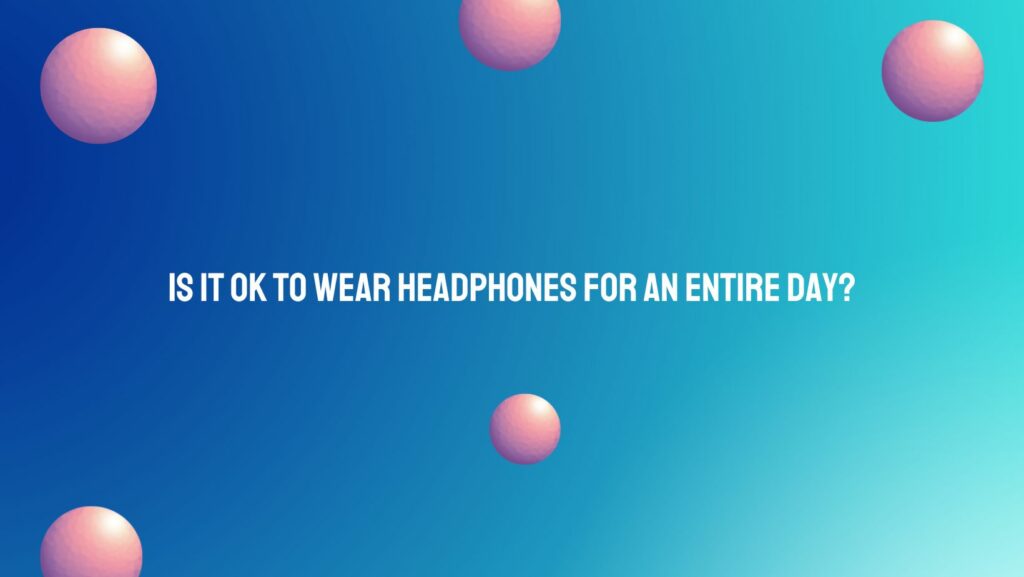In the symphony of modern life, headphones have become the conductor, orchestrating our auditory experiences from dawn to dusk. Whether we’re working, commuting, or simply seeking solace in our favorite tunes, headphones provide a gateway to a world of sound. However, the question looms: Is it okay to wear headphones for an entire day?
The allure of uninterrupted audio immersion holds undeniable appeal. From enhancing productivity to fostering relaxation, headphones offer a personalized soundtrack to our daily routines. Yet, amidst the convenience and comfort they provide, concerns about the potential risks emerge, raising questions about the impact of prolonged headphone use on our auditory health and overall well-being.
One primary concern associated with wearing headphones for an entire day is the risk of auditory fatigue and potential damage to hearing health. Prolonged exposure to sound, particularly at high volume levels, can lead to temporary hearing impairment, tinnitus, and even permanent hearing loss over time. The World Health Organization (WHO) warns that exposure to sounds exceeding 85 decibels (dB) for extended periods poses significant risks to auditory well-being. Therefore, the prospect of wearing headphones for an entire day raises red flags about overexposure to harmful sound pressure levels.
Moreover, extended headphone use can contribute to physical discomfort and strain on the head, neck, and ears. Over-the-ear headphones, while providing superior sound isolation and comfort compared to in-ear models, may exert pressure on the skull and surrounding tissues, leading to headaches, neck pain, and discomfort over time. Additionally, heat and moisture buildup within the ear cups can create an environment conducive to bacterial growth, potentially increasing the risk of ear infections with prolonged wear.
However, not all headphone usage is created equal, and certain factors can mitigate the risks associated with wearing headphones for an entire day. Selecting headphones with ergonomic designs, breathable materials, and adjustable features can enhance comfort and reduce the likelihood of physical discomfort during extended wear. Additionally, incorporating regular breaks and varying listening activities throughout the day allows the ears to rest and recover, minimizing the cumulative impact of sound exposure and promoting auditory health.
Furthermore, the type of audio content and volume levels play a crucial role in determining the safety of extended headphone use. Listening to music or podcasts at moderate volume levels in quiet environments reduces the strain on auditory mechanisms and promotes safer listening practices. Conversely, exposure to loud or continuous noise, such as background chatter or environmental sounds, may prompt users to increase volume levels to compensate, increasing the risk of overexposure to harmful sound pressure levels.
In conclusion, while wearing headphones for an entire day may offer convenience and comfort, it’s essential to approach extended use mindfully. Prioritizing auditory health, comfort, and safety should always take precedence over prolonged immersion in audio content. By adopting safe listening practices, selecting headphones wisely, and being mindful of volume levels, we can continue to enjoy the benefits of headphones while safeguarding our well-being for years to come. Striking a balance between indulgence and moderation allows us to navigate the auditory landscape of daily life with clarity, comfort, and mindfulness.


